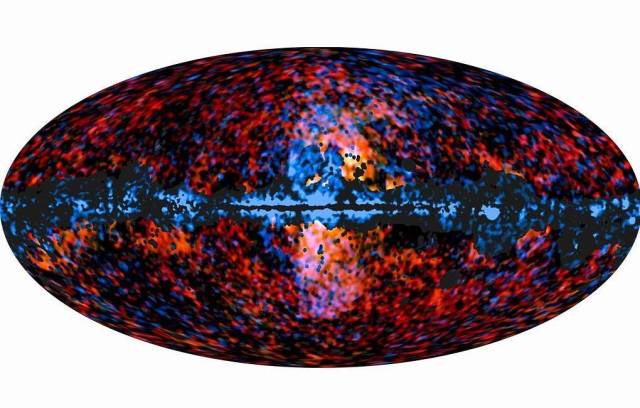Spektra-RG data allows scientists to conclude that black holes can directly affect the rate of star birth in galaxies
TASS, December 9. The Spektr-RG orbiting Observatory has found giant globular clusters of gas above and below the milky Way's core that emit x-rays. This explains the existence of the so - called "ears" of our Galaxy-other plasma clouds that emit a large number of gamma rays, the press service of the Moscow state University writes with reference to an article in the scientific journal Nature.
Astronomers call the" ears " of the milky Way giant bubbles of gas that emit intense gamma radiation. They were discovered by the Fermi orbiting telescope in 2010. Later, astronomers discovered similar bubbles in the neighboring Andromeda Nebula, and also found hints that they exist in the vicinity of other spiral galaxies.
Theorists suggest that these giant gas bubbles appeared in intergalactic space at a time when black holes from the center of the milky Way and the Andromeda Nebula were coming out of "hibernation". Other scientists believe that the cause of their appearance could be supernova explosions and other episodes of activity of relatively small but numerous objects of stellar mass in the cores of spiral galaxies.
Thanks to the Russian-German Spektr-RG orbiting telescope, which was launched into space last summer, scientists have suggested the cause of these gas accumulations. When analyzing data from this telescope, astronomers ' attention was drawn to several areas that produce high-energy photons. They are located near the Central regions of the milky Way.
After studying them in detail, astrophysicists came to the conclusion that these are parts of giant "bubbles" of very hot plasma that was ejected from the Central regions of our Galaxy. "These bubbles are located symmetrically above and below the galactic plane. Their size reaches 45 thousand light-years, which is comparable to the size of the Galaxy, which is approximately 97 thousand light-years. The sharp edges of these bubbles reflect collisionless shock waves formed when the substance of the bubbles interacts with the interstellar medium," explained Anatoly Cherepashchuk, one of the authors of the article, an astrophysicist from Lomonosov Moscow state University.
In their shape and size, these structures turned out to be very similar to the "ears" of the milky Way, which Fermi discovered. Scientists suggest that this suggests that both these and other clouds of gas were formed due to the same processes in the center of the milky Way. These processes are associated with the activity of the supermassive black hole Sgr A* (read as Sagittarius a with an asterisk, - approx. TASS).
Another evidence of this may be that the intensity of soft x-ray and gamma-ray radiation in many regions of these clouds turned out to be identical, and their borders-external for the "ears" of our Galaxy and internal for the clouds opened by "Spectrum - RG" - coincide.
Astronomers ' calculations show that supernova explosions and other stellar mass objects inside the milky Way could hardly have caused such interconnected giant structures to appear. This is due to the fact that our Galaxy, in principle, can not produce as many new stars as necessary for the release of such large volumes of gas beyond its borders.
"The discovery of these bubbles allows us to say that although the activity of the supermassive black hole in the center of the Galaxy is small now, in the past it was much stronger. Thus, there are reasons to believe that there is a strong form of coevolution between our Galaxy and its Central supermassive black hole, which manifests itself sporadically," says Cherepashchuk.
All this, according to scientists, suggests that black holes can directly affect the speed at which galaxies can produce stars. This may explain why in about half of the galaxies in the immediate vicinity of the milky Way, stars stopped being born, the scientists concluded.

